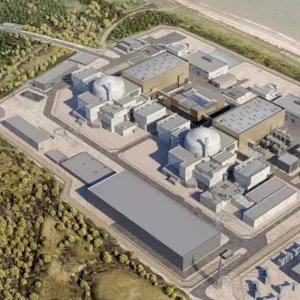The US$862m CIT will be the longest wastewater tunnel in the country and extend from Grey Lynn to the Mangere Wastewater Treatment Plant. It will have two branch connections (link sewers B and C).
In May, a 12m-long refurbished MTBM – called Domenica – was lowered in sections down a 55m-deep launch shaft at the May Road, Mount Roskill site. It has started to dig link sewer C and pipejacked the first section of 2.1m-diameter pipe on 4 June. Over the next four months, the machine is expected to operate 24/6, advancing around 18m/day and laying a further 328 pipe sections to end its drive at the Miranda Reserve in Avondale and thus complete the 1km link sewer C. It will then be used to dig link sewer B that will extend 1.5km from near the Mt Albert War memorial to the Orakei sewer main.
Geology along the alignments comprises moderately weathered to unweathered, extremely-weak to weak, interbedded sandstones, siltstones and mudstones, and to a lesser extent residual soils, and recent alluvium and Kaawa Formation soils.
The project is being delivered by the Ghella Abergeldie Joint Venture (GAJV) which was appointed main contractor by local water authority Watercare in early 2019. GAJV subsequently commissioned Arup to provide tender design support, detailed design services and construction phase support of shafts structural design and tunnel lining design.
The main 4.5m-diameter sewer tunnel will be dug by a 5.4m-diameter Herrenknecht EPB TBM – Hiwa-i-te-Rangi – that is currently being assembled close to the shaft at Mangere. It is expected to be launched in late June/July. Located at depths of up to 110m, the CIT will convey wastewater under gravity to the Mangere wastewater treatment plant and have the ability to control flow and store a volume of 200,000m3. One section will cross the harbour at around 15m below the seabed.
Designed to reduce wet-weather overflows, the CIT will prevent wastewater entering Central Auckland’s waterways and improve water quality at beaches, harbours and streams. The project is due for completion in late 2025/early 2026.







